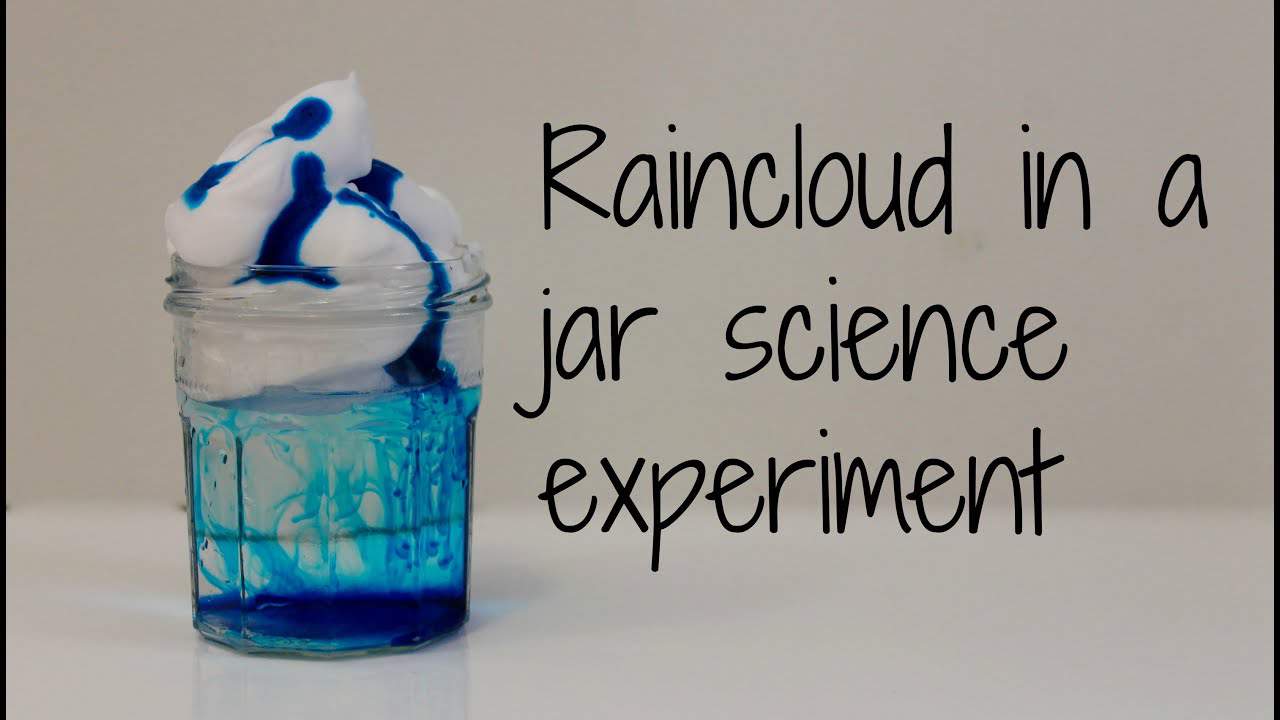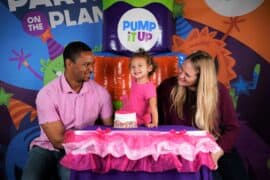Magical Raincloud Experiment for Budding Meteorologists: A Parent’s Guide
Hello there, wonderful parents! Are you ready to turn an ordinary day into an adventure of learning and discovery with your little ones? We’ve got something truly special for you today – the thrilling raincloud experiment! This super fun activity is not only a blast to do but also an excellent way for kiddos to get a hands-on understanding of how rain clouds work.
Now, let’s make science as mesmerizing as a double rainbow with this guide that’s brimming with smiles and excitement. You won’t need a weatherman’s precision to see the brightening of your child’s curiosity as we delve into this vivacious venture. So, grab your lab coats (or just your aprons!), and let’s get ready to create a tiny atmospheric wonder right in your home!
Why the Raincloud Experiment Rocks for Kids
Before we dive into the “how-to,” let’s talk about the “why.” Why is the raincloud experiment a fantastic experience for your kiddos? It enlightens young minds on the basic concepts of earth science and meteorology in a super tangible and visual way. This isn’t just learning; it’s learning with a splash!
It helps children grasp essentials such as:
- The role of clouds in the water cycle
- How clouds form and what triggers rainfall
- The concept of saturation and density differences
Instead of just telling your kids these concepts, show them! It’s one of the most engaging and memorable ways to encourage a budding interest in the natural world and the skies above.
Materials You’ll Need for the Experiment
Alright, super-parent, gather your young scientists and let’s round up the simple ingredients you’ll need. The beauty of this experiment is that most items are already at your fingertips! No trips to the science supply store needed.
- A large, transparent jar or vase – so you and your mini meteorologists can have a clear view of the magic happening inside.
- Water – it represents the air around us.
- Shaving cream – this fluffy stuff will mimic the clouds (plus, it’s always a giggle-inducer).
- Food coloring – this is the “rain” in our experiment, showing the beauty of a downpour.
- A dropper or small spoon – for precision in your rain-making endeavors.
With these tools, you’re on your way to conjuring clouds in your very own kitchen or classroom. It’s not alchemy; it’s science!
Step-by-Step Guide to Creating Your Indoor Raincloud
Excitement is building, the stage is set, and your audience (aka your kids) is eager to see the performance of the Raincloud Experiment. Let’s break down the steps to ensure your success.
- Prepare Your Workspace: Cover your table with a towel or sheet – things might get a tad wet and colorful.
- Fill ‘er Up: Pour water into your clear jar, leaving enough room at the top for the “cloud” to sit comfortably.
- Cloud Creation: Spray a generous amount of shaving cream on top of the water till it looks like a puffy cloud hovering over the “air.”
- Raindrops Are Coming: Using the dropper or spoon, have your kids slowly add drops of food coloring onto the shaving cream cloud.
- Watch the Wonder: Observe as the food coloring begins to seep through the shaving cream, falling into the water like rain. The ooh’s and aah’s will be audible!
See? We’re not just making a mess; we’re making memories and learning all the while. Through this simple but effective setup, kids can visually comprehend how rain is formed in the atmosphere.
The beauty of this experiment is its adaptability. Got curious kiddos who want more? Why not explore variations of the raincloud experiment with different “cloud” densities or “rain” intensities? Science is all about asking questions and testing to find the answers, so encourage your little explorers to let their imaginations pour.
Creating this mini meteorological phenomenon with your children will not only give them a clearer understanding of the weather but also foster a deeper connection with the natural world. Watch as their fascination with science grows like a cumulus cloud on a sunny day!
Stay tuned, as we will dive deeper into the scientific explanation behind the raincloud experiment and how you can incorporate learning objectives for various age levels. Plus, we’ll share tips on turning this activity into a launching pad for more advanced weather-related experiments and how to keep the curiosity flowing, even after the experiment is over!
But for now, as your kiddos are wide-eyed at their very own rain dance, remember to bask in the joy of their discovery. It’s moments like these that sprinkle our lives with the magic of learning together!

5 Essential Tips for Parents Preparing for the Raincloud Experiment
Before we unveil the curtain on our little meteorological masterpiece, let’s prep you with some pro tips. Attention to detail now will pay off when your junior scientists are squealing with delight later!
- Safety First: Although the materials involved are generally safe, always supervise your kids closely during the experiment, especially when handling food coloring to prevent stains on clothing or surfaces.
- Experiment Outdoors or in a Well-ventilated Area: If the weather allows and you have an outside space, consider doing the experiment outdoors. Not only does it minimize clean-up, but it also adds an authentic touch to your weather experiment!
- Prepare for Spills: Have a roll of paper towels or a cloth handy for any accidental spills. You want to enjoy the rain in the jar, not on your table.
- Embrace the Mess: Sometimes learning gets messy, and that’s okay! Dress your little ones in clothes that can get a splash of color, and let them know it’s all part of the experimental fun.
- Incorporate Storytelling: To make the experiment even more enchanting, weave in a story about the weather or clouds. Your kids’ imaginations will soar as high as cumulonimbus clouds while they learn.
Now that you’re armed with these savvy tips, you can confidently step into the wonderful world of at-home science fun. Remember, the goal is to ignite curiosity and a love for learning – so even if things don’t go perfectly, the joy is in the journey (and the little lessons along the way)!
Diving Deeper – The Science Behind the Fun
As promised, let’s peek behind the curtain and understand the science that makes the raincloud experiment so cool. When you add the food coloring to the shaving cream, it initially sits atop the fluffy “cloud.” But as it collects, it becomes heavier, eventually seeping through just as water droplets in a real cloud gather and fall as rain when they become too heavy.
Precipitation is a key part of the water cycle, which is fundamental to our planet’s weather systems. By demonstrating saturation and precipitative action in such a simple and clear way, your little ones can grasp these scientific principles effectively.
Learning Objectives for Different Ages
We can tailor the raincloud experiment’s learning objectives for various age groups. For younger children, focus on the sensory aspects – the textures, colors, and simple concepts of “up” and “down” or “light” and “heavy.” Older kids can handle more complex ideas like the water cycle, states of matter, and the role of gravity in precipitation.
Laying the Groundwork for Future Weather Wizards
Use this experiment as a springboard for further exploration. Invest in a child-friendly weather station, watch clouds roll by and identify their types, or even create a daily weather journal. The possibilities for extending this learning adventure are as boundless as the sky itself!
There we go, shining science superstars! With the raincloud experiment tucked into your activity belt, let the wonders of the atmosphere sprinkle down and inspire the meteorologists of tomorrow. Every moment of curiosity, every droplet of learning, adds up to a downpour of knowledge and fun. Keep splashing in the puddles of discovery, and the love for science will surely keep growing in the hearts and minds of your dynamic little learners!
See more great Things to Do with Kids in New Zealand here. For more information see here
Disclaimer
The articles available via our website provide general information only and we strongly urge readers to exercise caution and conduct their own thorough research and fact-checking. The information presented should not be taken as absolute truth, and, to the maximum extent permitted by law, we will not be held liable for any inaccuracies or errors in the content. It is essential for individuals to independently verify and validate the information before making any decisions or taking any actions based on the articles.




